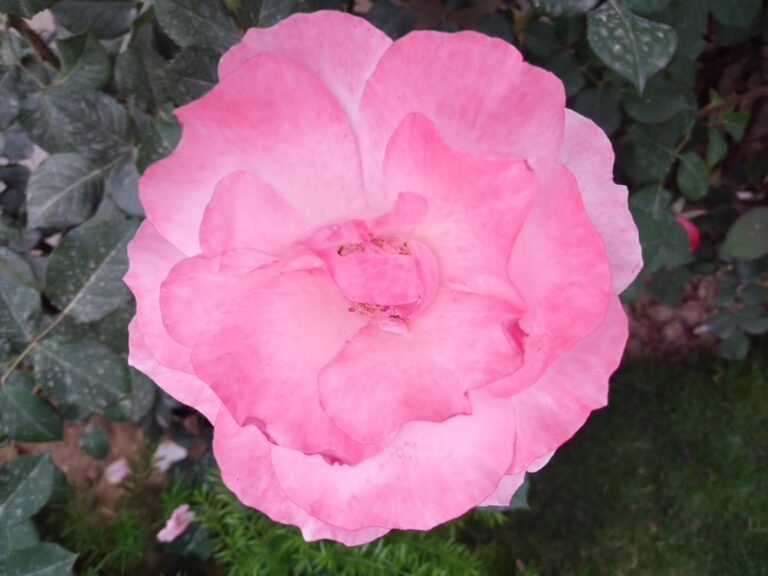Moringa: The Miracle Tree of 2024
Fascinating World of CBD and Hemp-Based Products
CBD, or cannabidiol, is a natural compound found in cannabis and hemp plants. Unlike THC, CBD is non-psychoactive, meaning it doesn’t produce a “high.” It is commonly used in various forms like oils, capsules, and creams, and is believed to help with conditions such as chronic pain, inflammation, anxiety, and epilepsy. Uses, Benefits, and More – Healthline](https://www.healthline.com/health/your-cbd-guide). Research is ongoing to fully understand its benefits and potential risks. You can explore more about CBD .(https://www.webmd.com/diet/health-benefits-cbd).
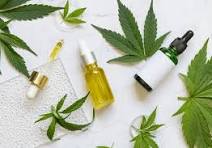
Hemp CBD vs. Cannabis CBD: What’s the Difference?
Hemp and Cannabis:
- Hemp and marijuana are two different varieties of the Cannabis sativa plant.
- Hemp contains more CBD (cannabidiol) and minimal THC (tetrahydrocannabinol).
- Marijuana, on the other hand, has higher THC levels, which are the compound responsible for the “high” associated with cannabis use.
CBD Products:

- Most CBD products are made from hemp plants due to their higher CBD content and negligible THC.

- Under the 2018 Farm Bill, CBD hemp-derived CBD products are generally legal across most of the USA.
- However, CBD products made from marijuana plants with THC levels higher than 0.3% remain illegal federally but may be legal under some state laws12.
- Health Benefits:
- People use CBD for various physical and mental issues, including pain, nausea, addiction, and depression.
- While scientific studies haven’t confirmed CBD’s effectiveness for all conditions, evidence suggests it interacts with the endocannabinoid system.
- Industrial hemp-derived CBD still provides health benefits even if medical cannabis isn’t available in your state3.
Remember to check your local laws and regulations when using CBD products.
Common CBD products:
- CBD Oil:
- This is one of the most popular forms. It’s extracted from hemp plants and can be taken orally or applied topically.
- People use it for relaxation, stress relief, and potential health benefits.
“I’m excited to share this product with you, and as an affiliate, I may earn a commission if you purchase through this link.”
- CBD Capsules:https://a.co/d/j9bUOEE
 These are pre-measured doses of CBD in capsule form.
These are pre-measured doses of CBD in capsule form.- They’re convenient and easy to incorporate into your daily routine.
- CBD Edibles:
- These include gummies, chocolates, and other tasty treats infused with CBD.
- They’re discreet and offer a pleasant way to consume CBD.
- CBD Topicals:
- Creams, lotions, and balms infused with CBD.
- Applied directly to the skin for localized relief (e.g., muscle soreness).
- CBD Vape Products:
- Vape pens or cartridges containing CBD oil.
- Inhaled for quick effects, but be cautious about additives.
- CBD Tinctures:
- Concentrated liquid extracts with a dropper for precise dosing.
- Usually taken sublingually (under the tongue).
- Charlie & Buddy Hemp Oil for Dogs and Cats is a natural, THC-free solution designed to support your
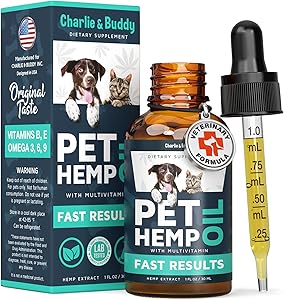
Hemp Oil for Pets https://a.co/d/6950j5l pet’s well-being. This organic oil helps alleviate anxiety, stress, pain, arthritis, and seizures while promoting restful sleep and hip joint health. Enriched with Omega 3, 6, 9, and Vitamin E, it enhances your pet’s coat and vitality. Suitable for all breeds and sizes, this calming treat ensures your furry friend stays happy, healthy, and stress-free.
Remember to start with a low dose and consult a healthcare professional if you have any concerns.
When it comes to Air Travel, the Transportation Security Administration (TSA) has Clear Guidelines Regarding Cannabis Products:
- Marijuana and THC Gummies:
- Illegal: Bringing marijuana, including THC gummies, on board is prohibited.
- This applies to both domestic and international flights, as cannabis remains classified as a Schedule I controlled substance at the federal level1.
- CBD Oil and Cannabis-Infused Products:
- Legal (with restrictions): Some Cannabidiol (CBD) oil products are allowed if they contain no more than 0.3 per cent THC on a dry weight basis or are FDA-approved.
- TSA officers focus on security and do not actively search for marijuana or other illegal drugs. However, if any illegal substance is discovered during screening, it will be reported to law enforcement2.
Remember to check specific regulations for your destination, as laws can vary by country. Safe travels!
Cannabis Cultivation Thrives in Specific Climates, and Different Regions Around the World Offer Varying Conditions for Optimal Growth. Here are Some Insights:
- Tropical Climates:
- Ideal for Cannabis: Hot and humid tropical climates are favourable for cannabis cultivation. Countries like Jamaica, Thailand, and parts of South Africa provide excellent conditions.
- High Yields: These regions experience consistent warmth and abundant sunlight, resulting in high yields and quality cannabis.
- Temperate Climates:
- Moderate Conditions: In temperate zones, regions with mild temperatures and moderate humidity are suitable.
- Examples: Durban Poison, a strain from South Africa, thrives in subtropical temperate climates1.
- Countries: France, Canada, and the United States are known for their temperate climate cannabis production2.
- Arid and Semiarid Regions:
- Wild Cannabis: Arid and semiarid areas with low precipitation, such as steppes and deserts, naturally support wild cannabis growth.
- Central Hindu Kush: The central part of the Hindu Kush mountain range shares this climate, where cannabis has historically thrived1.
- Precision Irrigation and Environmental Considerations:
- Water Management: Cannabis cultivation can be water-intensive, leading to water pollution and diversion. Technologies like precision irrigation can help reduce water use.
- Energy Consumption: Indoor cultivation (greenhouses) allows control over light and temperature but comes with higher energy demands and environmental implications3.
Remember that local regulations and legal status also play a crucial role in determining where cannabis can be grown. Always check specific guidelines for each country.
Opium and Cannabis (Commonly Known as Weed) are Distinct Substances with Different Origins, Effects, and Mechanisms of Action. Let’s Explore Their Differences:
- Origin and Composition:
- Opium:
- Derived from the opium poppy plant (Papaver somniferum).
- Contains opioids, including compounds like morphine, codeine, and heroin.
- Cannabis (Weed):
- Comes from the Cannabis sativa
- Contains cannabinoids, with the most well-known being delta-9-tetrahydrocannabinol (THC).
- Mechanism of Action:
- Opium:
- Binds to mu-opioid receptors in the brain, affecting memory, motivation, and emotional responses.
- Can lead to pain relief, euphoria, and respiratory depression.
- Cannabis:
- THC binds to CB1 receptors in areas related to cognition and movement (e.g., frontal cortex, cerebellum).
- Produces effects like appetite stimulation, impaired cognition, and memory alterations.
- Clinical Usefulness and Risks:
- Opium:
- Used for pain relief but carries risks of addiction, constipation, and immune suppression.
- Cannabis:
- Used for various purposes, including pain management, but also has potential cognitive effects and a risk of dependence.
- Opium:
- Opium:
- Opium:
Remember that both substances can be addictive due to their impact on dopamine release in the brain. Always consider legal and health implications when using either opium or cannabis12.
Opium has Several Legitimate Medical Uses, Primarily Due to its Alkaloids. Let’s Explore Them:
- Pain Relief:
- Morphine, derived from opium, is a potent analgesic. It acts on the brain and spinal cord to relieve pain.
- Other opium derivatives, like codeine, are also used for pain management.
- Antitussive (Cough Suppressant):
- Opium alkaloids can help suppress cough reflexes.
- Paregoric, a camphorated solution of opium, was historically used for this purpose.
- Treatment of Diarrhea:
- Opium or its derivatives, such as tincture of opium, have been used to treat severe diarrhoea by relaxing the gastrointestinal tract.
Remember that opium and its derivatives should be used under medical supervision due to their potential for addiction and side effects12.
Opium Use Carries Several Risks, Both Short-Term and Long-Term. Let’s Explore Them:
- Short-Term Effects:
- Confusion, blurry vision, and even hallucinations.
- Intense stomach pain and difficulty urinating.
- Agitation, dizziness, and fainting1.
- Long-Term Risks:
- Tolerance: Needing more opium to achieve the same effect.
- Dependence: Craving for the substance, leading to misuse of other drugs.
- Organ damage (such as liver and kidney issues).
- Respiratory depression: Slowed breathing, especially in cases of overdose.
- Increased risk of death: Opium use is associated with cardiovascular disease and cancer23.
Remember, opium’s effects extend beyond addiction, impacting both the body and mind. Seeking professional help is crucial for those struggling with opium use.
Marijuana (also known as Weed) is Distinct from Opium and Cannabis. Let’s Explore the Differences and the Medical Uses of Marijuana:
- Mechanism of Action:
- Opium: Derived from the opium poppy plant, it binds to opioid receptors in the brain, affecting memory, motivation, and emotions.
- Cannabis (Weed): Contains cannabinoids, with the main one being delta-9-tetrahydrocannabinol (THC). THC binds to CB1 receptors in areas related to cognition and movement.
- Effects on the Body:
- Opium:
- Pain relief, euphoria, and calm.
- Impact on the brain, digestive system, and immune system.
- Weed:
- Used to treat:
- Nausea and vomiting (e.g., during cancer treatment).
- Loss of appetite and weight loss (associated with HIV/AIDS).
- Epilepsy, chronic pain, and muscle spasms12.
- Used to treat:
- Opium:
- Clinical Usefulness:
- Opium: Historically used for pain relief but carries risks of addiction and side effects.
- Weed: Approved for medical use in various conditions, including pain management, nausea, and appetite stimulation34.
Remember that both substances have unique effects and risks, so medical supervision is crucial.
Marijuana Use Can Have Both Short-Term and Long-Term Effects. Here are Some of the Risks Associated with Marijuana:
- Brain Health:
- Permanent IQ Loss: Starting marijuana use at a young age can lead to permanent IQ loss of up to 8 points. Unfortunately, these IQ points do not return even after quitting marijuana.
- Mental Health: Studies link marijuana use to conditions like depression, anxiety, suicidal thoughts, and psychotic episodes.
- Physical Effects:
- Increased Heart Rate: Marijuana can elevate the heart rate.
- Gastrointestinal Disturbances: Some users experience nausea and vomiting.
- Bloodshot Eyes: Redness in the eyes due to blood vessel dilation.
- Dizziness and Drowsiness.
- Long-Term Risks:
- Marijuana Addiction: Contrary to popular belief, marijuana is addictive. Approximately 1 in 10 people who use it become addicted, and the risk increases when use begins before age 18.
- Impaired Cognitive Function: Marijuana affects attention, judgment, and coordination.
- Impact on Daily Life: Users may experience relationship problems, lower educational outcomes, reduced career achievement, and decreased life satisfaction1234.
Remember to make informed choices and seek professional advice if needed!
Cannabis Use Disorder (CUD) Involves Problematic Marijuana (Cannabis) Use. Here are the Key Signs and Symptoms:
- Continuing Use Despite Problems:
- Using cannabis despite physical or psychological issues.
- Persisting despite social or relationship difficulties.
- Cravings and Difficulty Controlling Use:
- Strong cravings for cannabis.
- Struggling to cut down or control use.
- Impact on Life:
- Giving up other activities for cannabis.
- Work, school, or home problems due to use.
- Risk-Taking Behavior:
- Taking cannabis in high-risk situations.
- Tolerance and Withdrawal:
- Developing tolerance (needing more for the same effect).
- Experiencing withdrawal when stopping use1.
Remember, seeking professional help is crucial if you suspect cannabis use disorder.
Besides Marijuana, there are Alternative Substances that can be used for Various Purposes. Let’s Explore Some of Them:
- Blue Lotus Flower (BLF):
- Often considered a safe alternative to cannabis.
- Known for its calming and mildly euphoric effects.
- Wild Dagga:
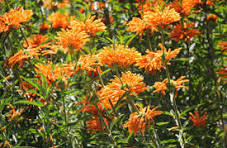
Wild Dagga - Also called Lion’s Tail.
- Used traditionally for relaxation and mild intoxication.
-
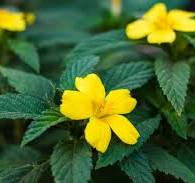
Damiana Damiana:
- Historically smoked or brewed as herbal tea.
- Associated with relaxation and mood enhancement.
- Siberian Motherwort:
- Used for anxiety relief and relaxation.
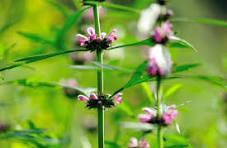
Siberian Motherwort
- Used for anxiety relief and relaxation.
-
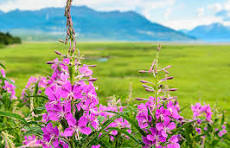
Wild Lettuce Wild Lettuce:
- Known for its calming properties.
Remember to discuss treatment options with your doctor to find the most suitable alternative for your needs! 12
If You’re Looking for Legal Alternatives to Cannabis, There are a Few Options You Can Explore:
- Delta-8 THC:
- Derived from hemp, delta-8 THC is federally legal and provides a milder high compared to delta-9 THC (the primary psychoactive compound in cannabis).

Hemp Gummies https://a.co/d/cxDyWjF - Available in various forms, including gummies and vapes1.
- Derived from hemp, delta-8 THC is federally legal and provides a milder high compared to delta-9 THC (the primary psychoactive compound in cannabis).
- Blue Lotus Flower (BLF):
- Considered a safe alternative, BLF has calming and mildly euphoric effects.
- Often used as a natural substitute for cannabis2.
- Siberian Motherwort:
- Known for its calming properties.
- Legal and widely available2.
- Wild Dagga (Lion’s Tail):
- Traditionally used for relaxation and mild intoxication.
- Another natural alternative worth exploring2.
- Damiana:
- Historically smoked or brewed as herbal tea.
- Associated with relaxation and mood enhancement2.
Remember to consult with a healthcare professional before trying any alternative substances.
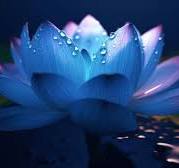 Blue Lotus Flower (Nymphaea caerulea) is a water lily that predominantly grows in Egypt and certain parts of Asia. It holds cultural importance and has been used in traditional medicine for thousands of years. Historically, it was believed to treat conditions like anxiety and insomnia. The flower contains psychoactive compounds, including apomorphine (which acts as a dopamine agonist) and nuciferine (thought to induce calmness).
Blue Lotus Flower (Nymphaea caerulea) is a water lily that predominantly grows in Egypt and certain parts of Asia. It holds cultural importance and has been used in traditional medicine for thousands of years. Historically, it was believed to treat conditions like anxiety and insomnia. The flower contains psychoactive compounds, including apomorphine (which acts as a dopamine agonist) and nuciferine (thought to induce calmness).
Consuming blue lotus flowers may result in a gentle euphoria, somewhat akin to the high from cannabis. However, it’s essential to note that the blue lotus flower isn’t approved for human consumption in the United States, except in the state of Louisiana, where it’s illegal. Common forms include teas, infused wine, and products for smoking or vaping12. Always check local and federal laws and consult a healthcare professional before trying it.
Wild Dagga (Leonotis leonurus) is a Bright and Colorful Member of the Mint Family, also known as Lion’s Tail. Here are Some Key Points About it:
- Origin and Habitat:
- Native to southern Africa, where indigenous tribes have used it for centuries.
- Flourishes in damp grasslands.
- Description:
- A broadleaf evergreen large shrub, growing 3 to 6 feet tall.
- Aromatic, medium-dark green leaves.
- Tubular orange flowers in tiered whorls (typical of the mint family) encircle square stems.
- Varieties include white (‘Alba’) and yellow.
- Uses:
- Mildly Psychoactive: Contains compounds like leonurine.
- Traditionally used for relaxation and mild intoxication.
- Cultivated as an ornamental plant for its copious orange blossom spikes.
- Nectar source for birds and butterflies.
- Legal Status:
- Not approved for human consumption in the United States.
- Used as an accent or screen in gardens and parks.
- Naturalized in regions beyond South Africa, including California, Hawaii, and Australia.
Remember to explore it cautiously and consult local laws and healthcare professionals! 12
Wild Dagga (Leonotis leonurus) has Mild Psychoactive Properties, Resulting in Several Physical and Mental Effects. Here’s What You Can Expect:
- Physical Effects:
- Relaxation: Induces feelings of tranquillity and bliss.
- Heightened Sensitivity: Some users report increased sensitivity to touch.
- Enhanced Appreciation: Music and colours may be more enjoyable12.
Remember that individual experiences can vary, so start with a small amount and observe how it affects you!
Wild Dagga (Leonotis leonurus) is a fascinating plant with various uses. To prepare it for use, you have a few options:

- Making Wild Dagga Tea:
- Add one to two teaspoons of dried Wild Dagga leaves or flowers to a cup of boiling water.
- Cover the cup and allow it to steep for approximately 10-15 minutes.
- Strain the tea into another cup and enjoy it hot. You can sweeten it with honey if desired1.
- Smoking Wild Dagga:
- Ensure your Wild Dagga flowers are completely dried.
- Crush or grind the flowers into smaller pieces.
- Smoke the crushed or ground flowers in a pipe, or water pipe, or roll them into a cigarette using rolling papers. Use a screen in pipes to prevent plant matter from being sucked through2.
- Tinctures and Extracts:
- Create a Wild Dagga tincture by filling a glass jar with dried flowers and covering them completely with 80-100 proof alcohol (such as vodka).
- Let the mixture sit for a few weeks, shaking it occasionally.
- Strain the liquid to obtain your tincture2.
Remember to start with small amounts and observe how Wild Dagga affects you. Enjoy exploring this unique plant!
Wild Dagga (Leonotis leonurus) has been traditionally used for various purposes, but it’s essential to understand both its benefits and potential risks. Here’s what you need to know:
- Physical Health Benefits:
- Wild Dagga has been used to soothe coughs, respiratory issues, headaches, and certain skin conditions.
- Its antibacterial properties make it useful for preventing and treating infections.
- Mental Health Benefits:
- Known for its calming effects, it helps alleviate stress and negative thoughts.
- Traditionally used in ceremonies to induce visions and enhance spiritual connections.
- Effects and Risks:
- Mild Psychoactivity: Wild Dagga contains the active compound leonurine, which can induce mild euphoria and heightened perceptions.
- Short-Term Memory Loss: Some users report this effect.
- Lack of Regulation: One significant issue is the lack of regulation surrounding its use123.
As with any substance, responsible use and awareness of potential risks are crucial.
Here are Some Natural Alternatives that May Help with Relaxation:
- Chamomile: An ancient herb known for its calming properties. You can use chamomile essential oil or enjoy chamomile tea.
- Cherry Juice: Studies suggest that tart cherry juice can minimize post-exercise muscle pain and inflammation.
- Blueberry Smoothies: Blueberries have antioxidant powers and may accelerate recovery from muscle damage.
- Cayenne Pepper: Contains capsaicin, a natural muscle relaxant recommended for conditions like fibromyalgia and rheumatoid arthritis.
- Vitamin D: Deficiency in vitamin D can contribute to muscle pain or spasms.
- Magnesium: An essential mineral that plays a role in neuromuscular function.
- Rest: Sometimes the simplest solution is the most effective12.
Remember to consult a healthcare professional before trying any supplements or remedies.
If you enjoyed this article, please like and share it with your friends. Don’t forget to share your personal experience/observations, thoughts and valuable suggestions for the education /benefit of others. Do subscribe to remain onboard and get more great content!
- Disclaimer: The contents of this article are intended to raise awareness about common health issues and should not be viewed as sound medical advice for your specific condition. You should always consult with a licensed medical practitioner before following any suggestions outlined in this article or adopting any treatment protocol based on the article’s contents.
Healthy Gut 2024:Awe-Inspiring Knowledge You Must Be Aware of
